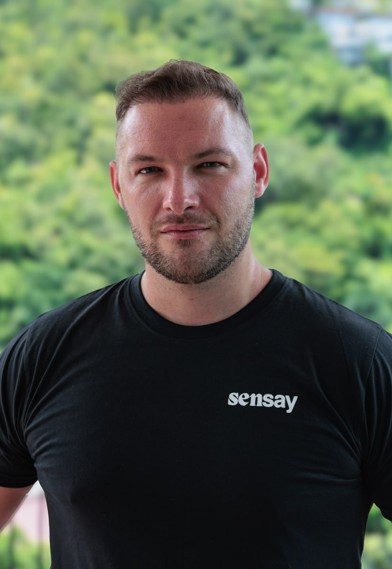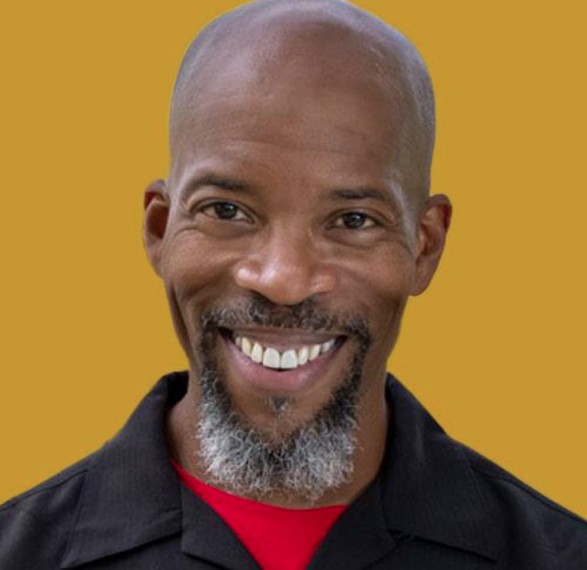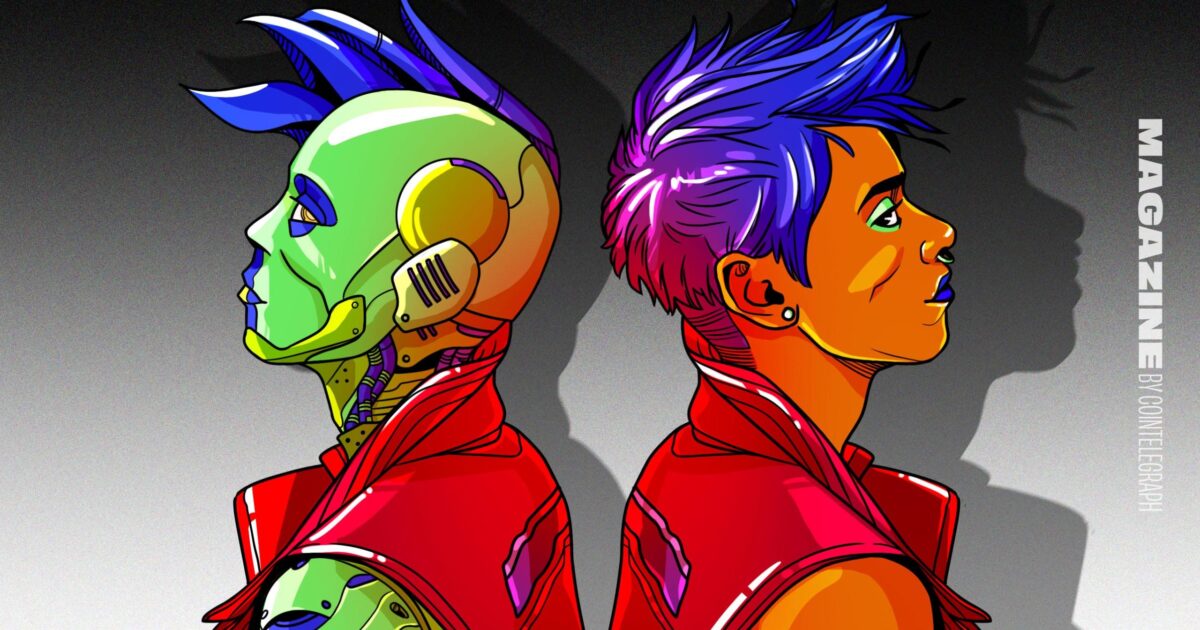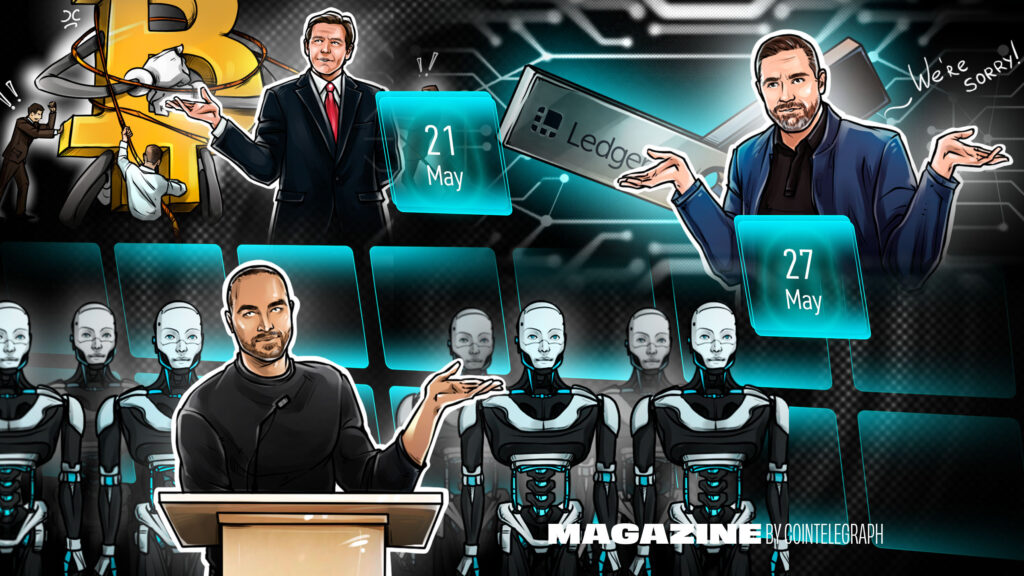If artificial intelligence could stand in for you, take your meetings, answer your emails, and even comfort your loved ones long after you’re gone, would you let it?


That’s no longer a hypothetical question. Around the world, a new class of startups is building digital twins — AI replicas of real people that act, speak and remember just like their human counterparts. These aren’t just souped-up chatbots or gimmicky holograms; they’re serious attempts to capture human essence in machine form, with real-world use cases and profound cultural implications.
The idea might sound like science fiction. In some cases, it already looks like an episode of Black Mirror. The Re;Memory project in South Korea helped pioneer the concept by allowing bereaved families speak to a hyper-realistic AI version of their deceased loved ones, complete with recorded memories and facial expressions. DeepBrain AI, which is the company behind the service, called it a tool for healing. Critics have called it grotesque.
But the digital twin era is arriving fast, and its most ambitious architects argue that AI replicas can be tools for productivity, legacy and emotional connection. Some are already acting on our behalf.
The case for an AI digital twin: You when you can’t respond
Dan Thomson, founder and CEO of Sensay, didn’t set out to build a startup. He was actually writing a book, a philosophical reckoning with meaning and memory, spurred in part by personal trauma. “I’d hit my head and lost my memory,” he says. “That experience stuck with me, the fear of disappearing.”


His solution became Sensay, which creates AI replicas of individuals. Thomson calls them “virtual humans” or “personas,” that have been trained on documents, videos, interviews, emails and more. These replicas don’t just sound like you — they act on your behalf.
“I’ve had people interact with my replica for hours on Telegram and not realise it wasn’t me,” Thomson says. “It’s 90%–95% indistinguishable.”
From grief tech to matchmaking to enterprise customer service, Sensay sees plenty of potential applications. Their replicas, or “sonas,” can be embedded into apps, websites and devices, and they learn continuously.
Executive coach Ant Blair coaches everyone from CEOs to entrepreneurs and trains his digital twin on all of his online meetings and coaching sessions. “The more I coach, the smarter it gets,” he says. That means a version of him — he calls it a “coach in your pocket” — is available to answer questions from clients around the world 24/7.
“They can ask things like, how do I manage nerves, or what’s the best way to structure a speech, or how do I reframe negative thought patterns. It’s filled with content from all my coaching sessions over the years, tips, frameworks, breathing techniques, mindset hacks.”
It’s currently text based, but he’s working on adding voice to make it more conversational and he hopes Sensay will start to offer video, too.


Twin Protocol personalizes digital twins based on vaults
One interesting aspect is that digital replicas can continue to grow and evolve once the training is over. That’s part of the power and a philosophical dilemma. If a replica evolves after death, is it still you?
That question is also central to Twin Protocol, a platform that calls itself “the next evolution in communication.” Co-founded by Stacey Engle and data scientist Bill Inman, alongside AI luminary Ben Goertzel as chief AI advisor, Twin Protocol is already live, with enterprise deployments and a self-serve product launching soon.


Twin Protocol focuses on “vaults,” which are curated data sets of your books, lectures, videos and voice memos. From this, a highly personalized AI twin is trained using a proprietary persona AI layer that captures your tone, style, diction and intent. The result isn’t just a chatbot with your name on it — it’s an interactive version of you that responds with your knowledge and in your voice.
“An AI twin isn’t about perfect replication,” Engle says. “It’s about purpose. You train your twin for something: customer service, legacy conversations, professional coaching. That curation matters.”
Authors can train their twin to answer questions about their work. Entrepreneurs can outsource first-line responses. In the future, your AI twin might be your calendar assistant, your family archivist, and your lifelong productivity partner.
And, perhaps more poignantly, it could become a tool of self-reflection. “Your twin can actually show you insights about yourself,” Engle says. “It’s like a mirror, but smarter. You start seeing patterns in your own thinking.”
Twin Protocol prioritizes ethics in both data use and design. The company works with the SingularityNET ecosystem and values transparency and opt-in participation. Users maintain control over their vaults and their replicas, right down to the ability to shut it all off.
It’s integrated with blockchain to verify the source of all training data. Every interaction, every data point and every vault addition can be tracked transparently, creating a ledger of consent and authenticity. “In a world of deepfakes, provenance is power,” says Engle. “We want every twin to come with a receipt.”
The tech is being used today in real-world contexts. Thought leaders and executives are creating vaults populated with years of public speaking engagements, articles, social media posts and interviews. These are not only useful for fans and followers — they become a searchable, interactive knowledge base that works on their behalf.
As the market grows, Twin Protocol also sees an opportunity for education and research. Curated AI twins could serve as mentors, tutors or interactive textbooks, bringing first-hand voices into classrooms, or allowing students to ask questions to a digital version of a historical figure.
This blend of public utility and private introspection is intentional. “We’re not building clones,” Engle says. “We’re building trusted extensions. Your twin should be able to do work for you without ever forgetting that it’s yours.”
How much time can a digital twin save you?
Harvard research suggests that well-used personal assistants can recover up to 45% of a person’s time. “Even if an AI twin gives you back 20%, that’s transformative,” she says. “What could you do with that time? Who could you spend it with?”
Ultimately, she sees AI twins as the start of a new chapter in personal development. “This is not about replacement. It’s about reflection, agency and amplification.”
Read also
Twin Protocol’s self-serve product is aiming to cost as little as $25 to get started, and plans are in motion to expand twin functions through integration with wearable tech and API connections to personal devices. The platform’s roadmap includes everything from AI TV, two twins having conversations with each other in real time (Twin TV), to holographic twin deployments. It’s also creating a token-based economy with TWIN token that may allow users to earn revenue by licensing interactions with their twin.
For businesses, the protocol enables white-label deployment. A CEO can clone their expertise into a branded company twin, which customers or internal teams can consult. For families, there’s a legacy feature, which allows the vault to be passed down to future generations. “We’ve already had clients express interest in including their vaults in their estate planning,” Engle says.
The company is also developing clever ways to help everyday users contribute training data. “Imagine getting a text prompt each morning, just one question about your life,” Engle says. “Over time, you’re training your twin without even realising it.”
She sees a role for twins in self-healing and coaching. With reflection prompts and real-time journaling integrations, twins can serve not just as assistants, but as wellness tools. “There’s potential here for emotional scaffolding,” she says. “Your twin may become part of your personal growth journey.”
And what happens after you’re gone? Twin Protocol envisions a respectful continuation of your AI twin, governed by pre-set permissions and context-aware limitations. “Your twin should never speak on your behalf beyond the grave unless you’ve asked it to,” Engle says. “Legacy must come with intention.”


From digital twin to personality extension with Colonii
Colonii, co-founded by Aileen Carville and Luke Nugent, represents a different take on the AI twin. Their avatars aren’t meant to mirror humans in form or tone. Instead, they function as expressive agents of counterculture, a deliberately surreal population built for Gen Z and Gen Alpha.
“Our avatars are emotively charged,” Carville says. “They’re not trying to look like you; they’re built to explore identity, not replicate it.”
Today, Colonii avatars are being used in brand campaigns, music videos, influencer marketing and digital storytelling. Each avatar has a unique voice and visual aesthetic. Some interact with fans. Others represent values or products. All of them embody Colonii’s goal: to create an autonomous society of digital beings that reflect the cultural realities of a new generation.
Read also
Younger users, Carville argues, don’t want an anatomically accurate copy of themselves. “They see identity as fluid, not fixed,” she says. “Colonii avatars are companions, creators, performers. They’re a new language of self-expression.”
At a recent summit, Colonii avatar Anja took the stage with anthropologist Dr. Lollie Mancey to discuss the future of AI companionship. The avatar’s responses were trained on Mancey’s own lectures and interviews. The result? A two-way dialogue that blurred the line between speaker and simulation.
As with Twin Protocol and Sensay, Colonii is exploring multiple use cases, from performance to commerce to education. But its most distinctive contribution is philosophical: a rejection of the idea that AI twins must be human-like at all.
“We’re not building nostalgia machines,” Carville says. “We’re building future identities.”
Grief, boundaries and the digital afterlife
The ethics of AI replicas are perhaps nowhere more fraught than in the realm of grief. Korea’s Re;Memory project, where terminally ill patients record hours of video so loved ones can speak to them after death, has sparked global debate.
To some, it’s comforting. To others, deeply disturbing. As Lisa Loud of the privacy-focused blockchain project Secret Network Foundation points out, “The emotional divide is real, and it’s valid. We have to design systems that honour personal boundaries. These should always be opt-in, and under the user’s control.”
Loud emphasizes consent, encryption and data provenance. “You should be able to turn it off. You should own your data. And you should always know who — or what — you’re talking to.”
The same concerns apply to evolving twins. If an AI continues learning after someone’s death, is it still “them?” Loud says no: “Eventually, it becomes derivative. That’s not necessarily bad. But we have to be honest about what’s happening. And we have to ask: ‘Is this helping people grieve or keeping them from doing so?’”
Cultural shifts and generational divide over digital twins
What’s striking is how generational the divide is. Millennials and Boomers, according to these founders, lean toward realism. They want their AI twins to look like them, speak like them, preserve something enduring. Gen Z and Alpha, meanwhile, are leaning into multiplicity. Their avatars are surreal, plural, symbolic. Their AI is not just a mirror, it’s a moodboard. (They overlooked poor Generation X, however, like usual!)


Engle believes both instincts are valid. “The idea of having different twins for different purposes — one for work, one for legacy, one for reflection — that’s not sci-fi. That’s how humans already behave. We’re different with our parents than with our co-workers. AI twins just codify that.”
In many ways, AI replicas are becoming emotional infrastructure. They absorb the mundane (answering FAQs), the profound (preserving memory) and the speculative (enhancing identity). If we let them, they could give us time back and perhaps offer insight into who we really are.
The age of the echo: AI replicants
From Sensay’s living memories to Twin Protocol’s curated consciousness, from Colonii’s expressive avatars to CoTwin’s planetary mirror, the digital twin space is exploding with possibility and with complexity.
These aren’t mere replications — they are echoes. Human echoes, trained on data, shaped by culture, filtered through algorithms, but fundamentally rooted in the question: What does it mean to be us?
As the digital twin movement accelerates, the philosophical questions remain. Who owns your likeness? Who gets to train it? Should your avatar comfort your grandchildren or just organise your inbox?
In this age of infinite mirrors, one thing is clear: Our reflections are no longer confined to the glass. They’re speaking, acting, learning — and they might outlast us all.
Subscribe
The most engaging reads in blockchain. Delivered once a
week.




Jillian Godsil
Jillian Godsil is an award winning journalist, broadcaster and author. She changed electoral laws in Ireland with a constitutional challenge in Ireland’s Supreme Court in 2014, she’s a former European Parliamentary Candidate, and is an advocate for diversity, women in blockchain and the homeless.
Read also
Musk hints at suing Microsoft, US Rep. wants Gensler fired, and more: Hodler’s Digest, April 16-22
Elon Musk suggests suing Microsoft, congressman plans bill to remove Gary Gensler, and Societe Generale launches euro-pegged stablecoin.
FTX 2.0 coming up, Multichain FUD and Worldcoin raises $115M: Hodler’s Digest, May 21-27
FTX reboot is in the works, Multichain issues spark uncertainty and Sam Altman’s crypto project Worldcoin raises millions of dollars.








